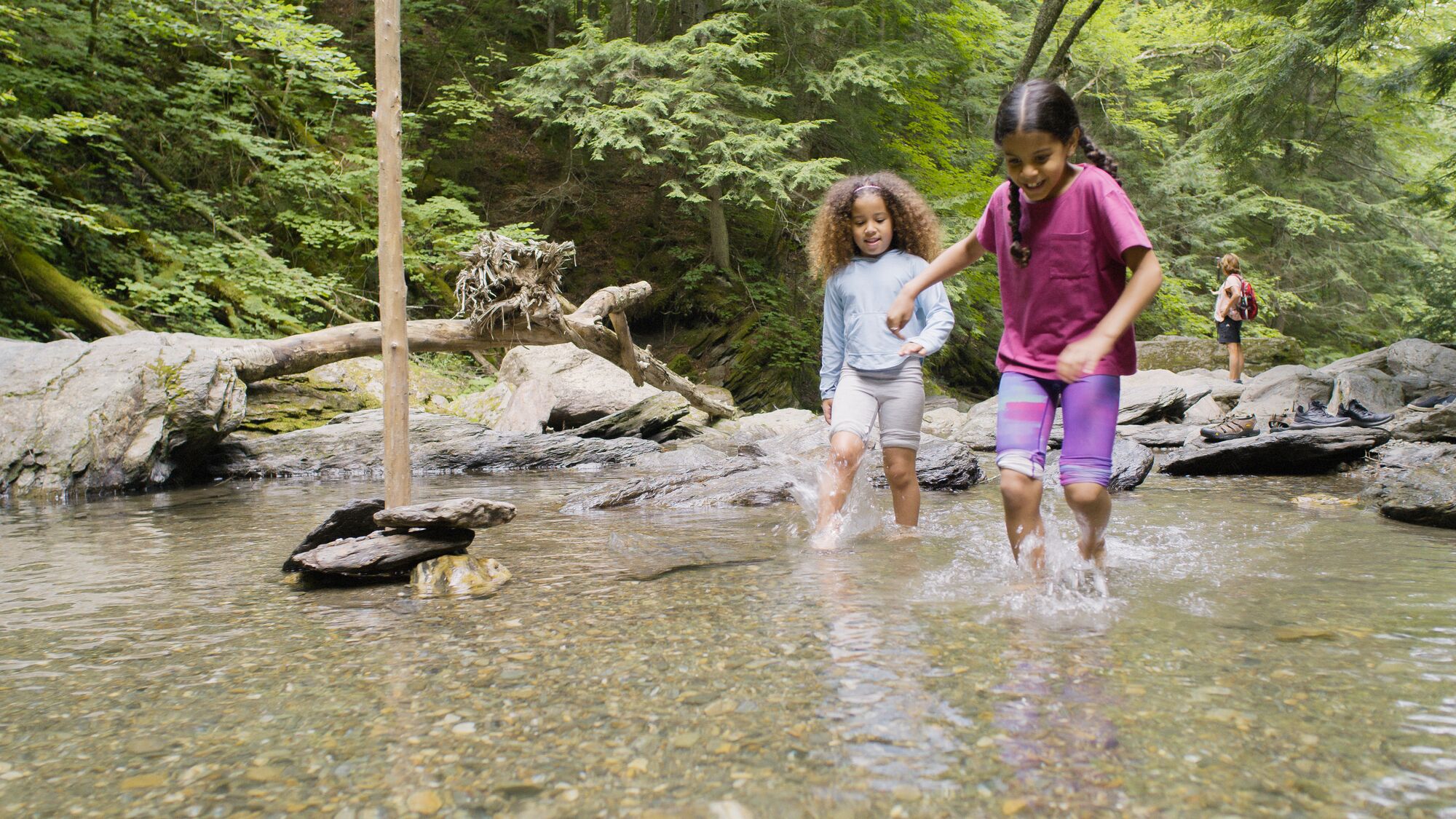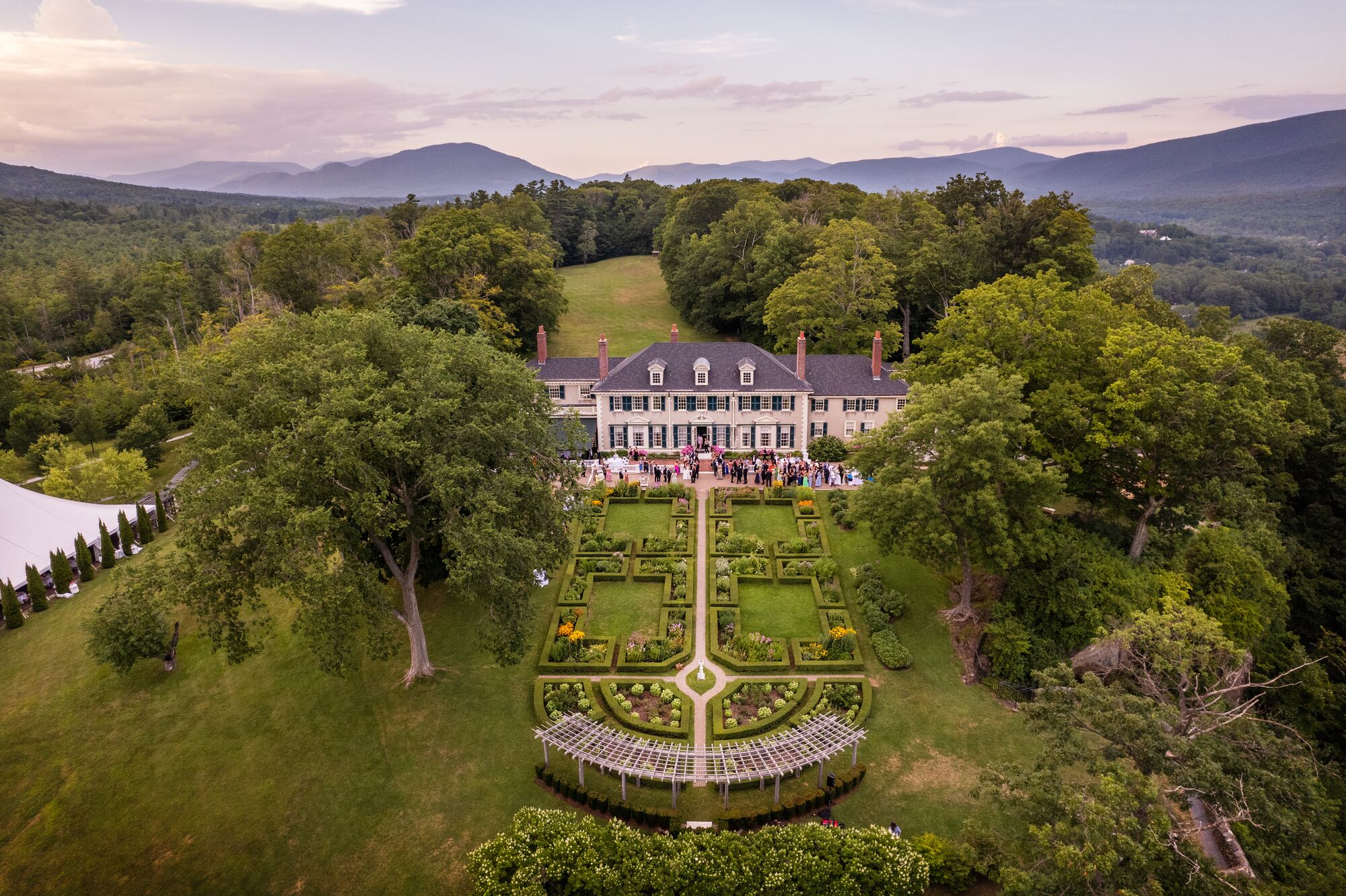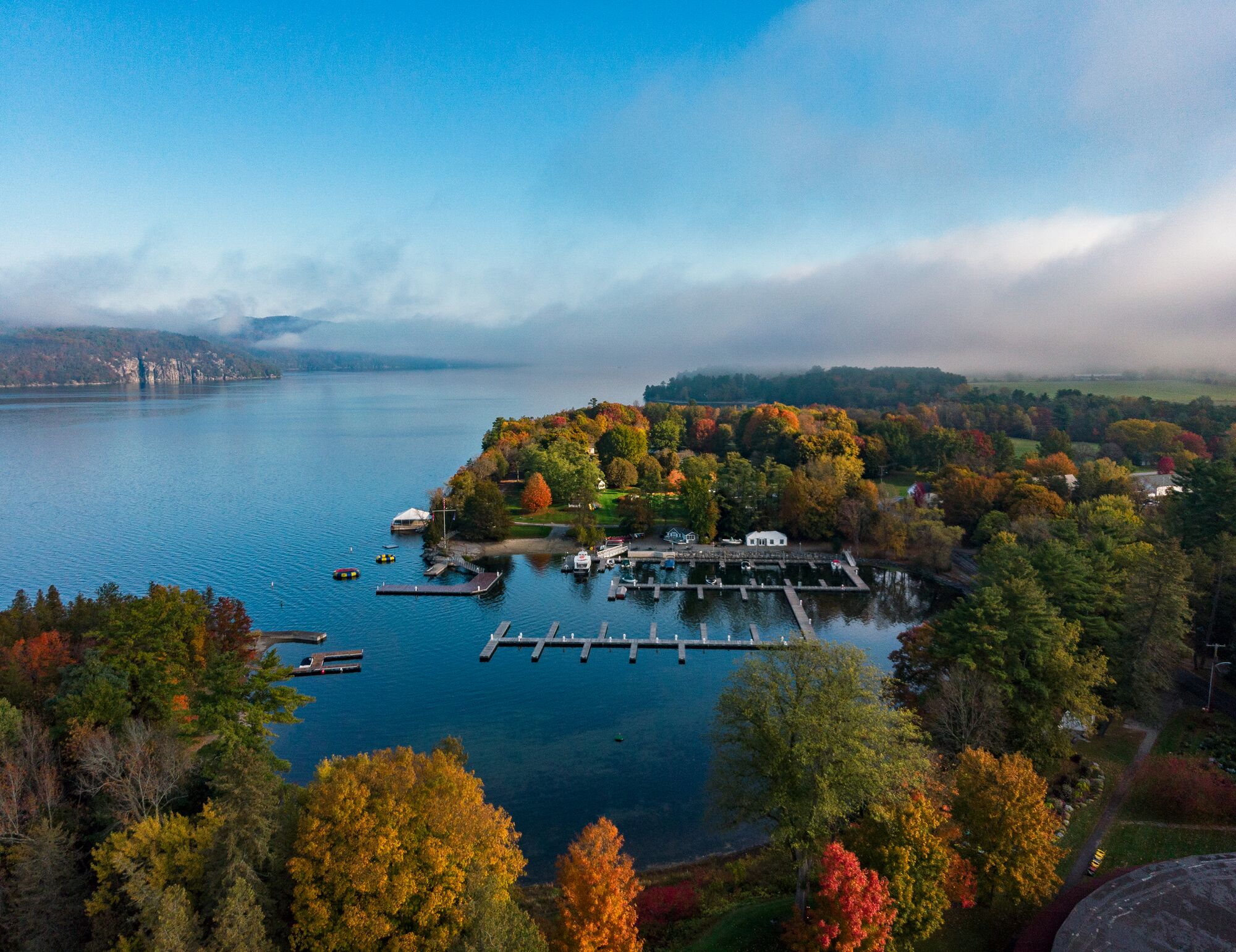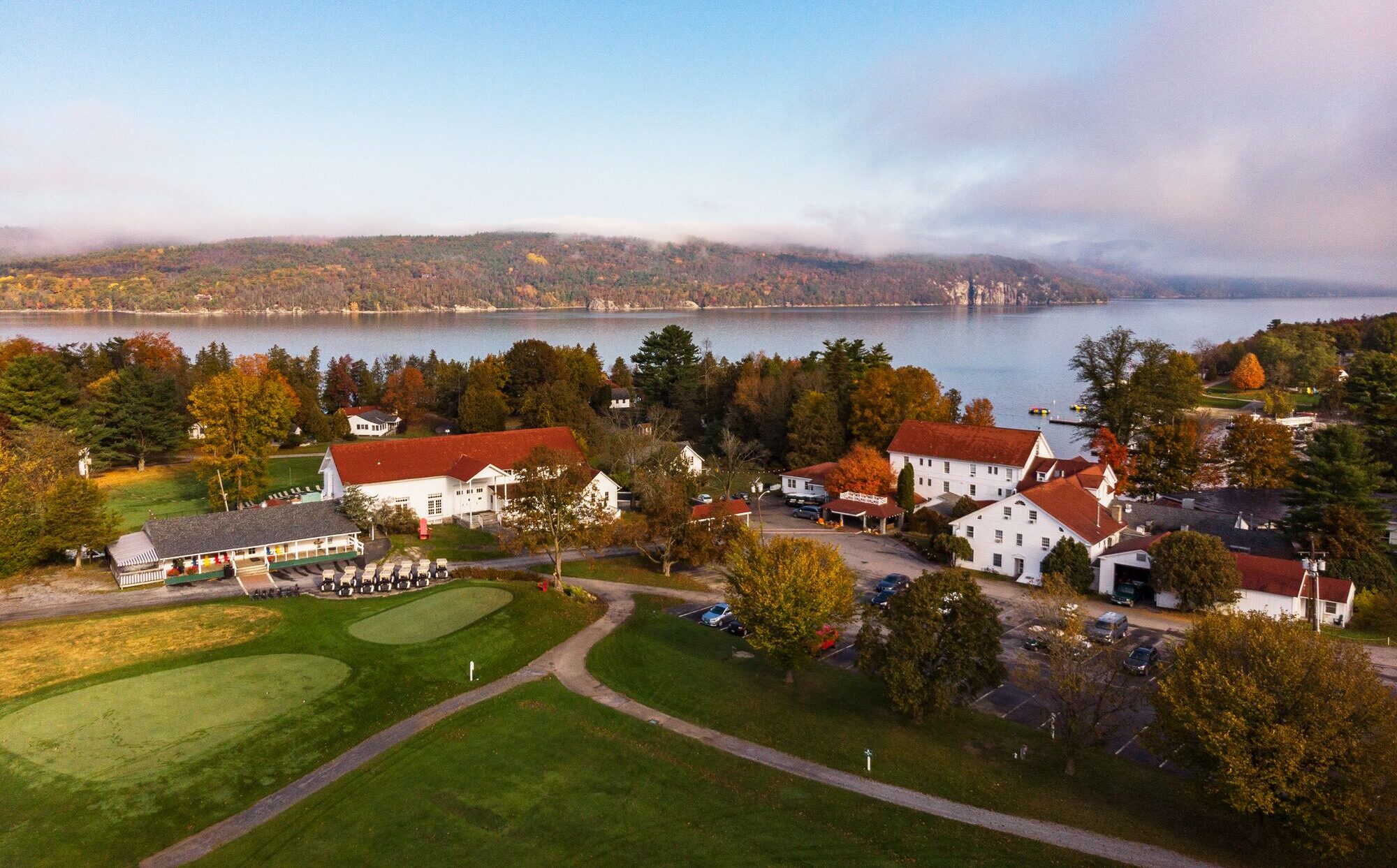Champlain Islands

Champlain Islands
Leave mainland Vermont by bridge or causeway—or even by bicycle ferry—and discover the bucolic realm of the Champlain Islands, some 80 square miles of land that divide the northern waters of Lake Champlain. Also known as Grand Isle County (Vermont’s smallest), this narrow swath of farms and meadowland reaches from just beyond the Burlington suburbs to the Canadian border. Its upper tip, in fact, isn’t an island at all but a tongue of land not even connected to the rest of the United States. Set off by geography and by their own unique sense of time and place, the Champlain Islands are truly a world apart.
That bike connection? It ferries cyclists across a cut in Lake Champlain’s Colchester Causeway, a former railroad bed, and into the state’s gentlest biking terrain. Vermont may be famed for its mountains, but here they’re seen as a distant, magical vista, looming to the east across the lake.
Start in the south, where South Hero’s Snow Farm Vineyard, one of Vermont’s earliest crafters of fine wines, offers a lively outdoor summer concert series. Meandering north into the town of Grand Isle, watch for a stout roadside structure built of massive cedar logs. The Hyde Log Cabin, restored and open to visitors from spring through fall, was built by settler Jedediah Hyde in 1783 and is one of America’s oldest surviving examples of this classic home style. Nearby, close to the town’s eastern shores, family-run Pomykala Farm offers the sweetest kind of pick-your-own harvest during strawberry season.
Vermont’s extensive park system hasn’t skipped the Champlain Islands. Knight Point, Grand Isle, and North Hero state parks all take advantage of their glorious lakeside locations, while Alburgh Dunes, one of the state’s newest parks, features just that: sand dunes, a gift of the age of glaciers. Out in Lake Champlain’s eastward “Inland Sea” are two alluringly remote state parks set on rugged Knight and Woods islands. These are accessible only by boat—or, as during February’s Great Ice! Festival, by a thrilling hike across frozen Lake Champlain.
The winter pathway to Knight Island happens to begin across from Hero’s Welcome, a what-they-haven’t-got-you-don’t-need general store where locals and visitors alike buy provisions and, in warmer weather, rent canoes and kayaks, bikes, and paddleboards. It’s a special summer treat to grab a sandwich at the store for an alfresco lunch at the nearby waterside deck. (In colder months, of course, a steaming mug of Hero’s Welcome hot chocolate is the reward you seek.)
If Grand Isle County is Vermont’s offshore discovery, then tiny Isle La Motte, population roughly 500, is the county’s own discovery—the island getaway within the Islands. This is where Europeans first visited Vermont. In 1609, French explorer Samuel de Champlain made a stop here on his maiden trip along the lake that would eventually bear his name. Nearly 60 years later, French soldiers built a fort as a southern outpost of their Quebec domain. Today this corner of Isle La Motte is home to the Roman Catholic St. Anne’s Shrine, a popular pilgrimage destination.
A northward ramble through the Champlain Islands ends at Isle La Motte, but in a grander sense it also ends more than 400 million years ago. That’s according to the fossils at the now high-and-dry Chazy Reef. These are relics you may have encountered before, because they speckle the dark limestone that was quarried here for use in places like New York’s Radio City Music Hall and the National Gallery of Art in Washington, D.C.
So while they remain staunchly “off the beaten path,” the Champlain Islands have left their mark on the wider world. And they continue to leave their mark on travelers ready to venture beyond the mainland to relax, reconnect, and make memories in a Vermont region like no other.
Top Picks by Season from Yankee Magazine
Things To Do In the Champlain Islands
Spring
North Hero House
North Hero
Goodsell Ridge Fossil Preserve
Isle La Motte
Maple Activities
Hero’s Welcome General Store
North Hero
Two Heroes Brewery
South Hero
Read More
Summer
Island Arts
North Hero
Biking
Island Line Trail from Burlington
Camp on an Island
Knight and Woods Island State Parks
St. Anne’s Shrine
Isle La Motte
Pomykala Farm
Grand Isle
Read More
Fall
Apple Picking
Allenholm Farm, Hackett’s Orchard
Harvest Festival
Snow Farm Vineyard
Champlain Islands Farmers Market
South Hero
Blue Paddle Bistro
South Hero
Kayaking
Lake Champlain
Read More
Winter
Snowshoeing at Snow Farm Vineyard
South Hero
Great Ice!
Hero Island Bay
Kraemer and Kin Farm Brewery Winter Carnival
Alburgh
DonnaSue Bakes
Grand Isle
Breakaway Farm
Grand Isle
Read More



